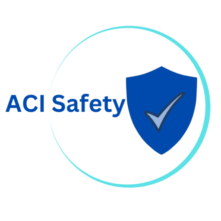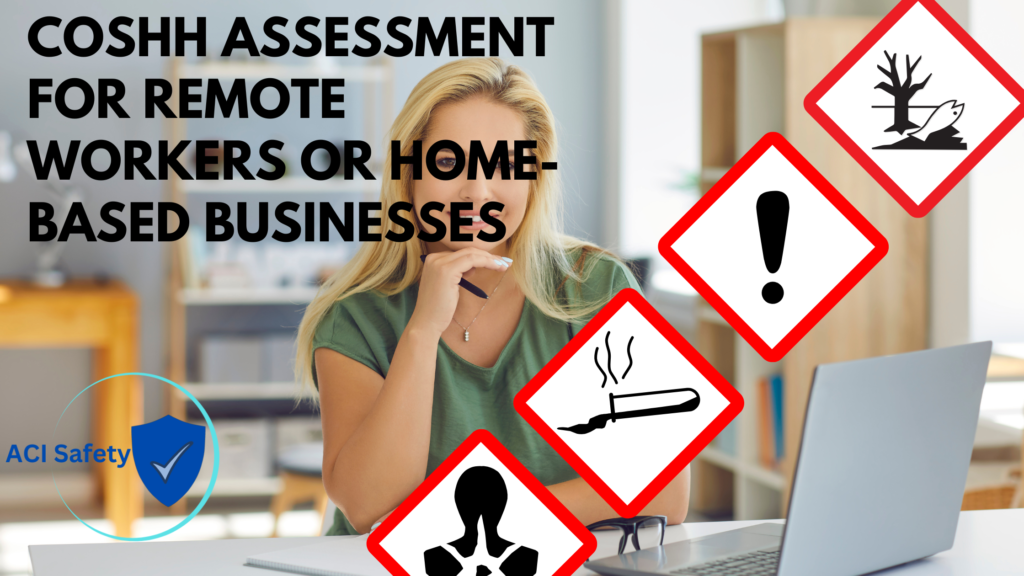If you’re running a small business from home or working remotely, you might assume COSHH doesn’t really apply to you. No warehouse. No chemicals cupboard. No staff in high-vis walking around with spill kits.
But here’s the thing—COSHH (the Control of Substances Hazardous to Health Regulations) isn’t about where you work. It’s about what you do and what you use while doing it.
That said, we’ve got to be practical. No one needs a full COSHH assessment just because they sprayed some Mr Sheen on their desk.
So let’s talk about when COSHH does apply to remote and home-based work, when it probably doesn’t, and how to keep things proportionate.
Does COSHH Apply to Remote Work? Sometimes, Yes.
Let’s start with the basics: COSHH applies when hazardous substances are used as part of a work activity. That includes self-employed people and home-based businesses. It doesn’t care whether you’re in a warehouse or a garden shed—it cares whether there’s a substance being used that could harm health.
But there’s a difference between something that’s technically hazardous and something that’s actually worth assessing.
So no—you don’t need to panic about the odd squirt of window cleaner. But if you’re regularly using certain products, or using them in ways most people wouldn’t at home, it’s a different story.
This simple COSHH guide breaks the concept down well if you’re new to it.
Realistic Scenarios: When You Probably Don’t Need a COSHH Assessment
Let’s be honest—if you’re just working from home on a laptop, with the occasional wipe-down of your desk or keyboard, COSHH doesn’t really apply in a meaningful way.
Examples where it’s usually fine to skip the assessment:
- Spraying a bit of polish or screen cleaner in your home office
- Using hand sanitiser occasionally
- Basic cleaning products for tidying up your own workspace
These are low-use, low-risk, everyday activities. You’re not using the substances in large amounts, and you’re not exposing anyone else to them.
So in these cases, don’t waste time creating a COSHH assessment. Use common sense. Good ventilation, sensible handling, and proper storage are enough.
When COSHH Does Apply at Home
Where COSHH does kick in is when hazardous substances are used frequently, in higher-risk ways, or as part of your business operations.
Some examples:
- Mobile cleaners storing and mixing concentrated cleaning products
- Salon owners or beauty therapists using acetone, dyes, bleaches, or glues at home
- Craftspeople or makers using resin, adhesives, solvents, or pigment powders
- Artists working with sprays, fixatives, or heavy-metal-based paints
- Print businesses using inks and solvents
- Candle or soap makers working with fragrances, dyes, or essential oils in bulk
In these cases, you’re doing something at home that’s no longer “domestic use”. You’re working with substances that, over time, can pose health risks—especially without proper controls.
That’s when you need to carry out a COSHH assessment. If you’re not sure what counts as hazardous, this post on what COSHH covers will point you in the right direction.
How to Do a COSHH Assessment at Home (Without Going Overboard)
Don’t worry—you don’t need to build a filing cabinet full of 20-page documents. A simple, honest, and site-specific assessment is usually more than enough.
Here’s how to do it properly:
- List the substances you use for work (not stuff you use as a regular householder)
- Check the hazards – Use the label or the Safety Data Sheet (SDS) for each one
- Think about exposure – How often is it used? In what quantities? Is the space ventilated?
- Decide what controls are needed – PPE, ventilation, safe storage, spill procedures
- Record your assessment – This is where a template comes in handy
- Review when things change – New products, different tasks, or after an incident
If you want a good example of what a proper assessment includes, check out this post on what to include in a COSHH assessment.
Use a Template—but Use It Properly
A good template will make this process quicker—but it’s not a substitute for thought.
You still need to tailor it to your setup. If your “workplace” is your spare room or kitchen, the risks and controls need to reflect that. Generic answers won’t cut it.
That’s exactly why I created a COSHH assessment template designed for small and home-based businesses. It’s simple, clean, and helps you cover everything you need—without turning into a form-filling nightmare.
What If It’s Just Me?
If you’re self-employed and working alone, you’re still responsible for your own health and safety—and anyone affected by your work (clients, delivery drivers, even family members if they share the space).
So yes, COSHH still applies to you. But again—it’s all about proportion.
This guide on who’s responsible for COSHH assessments clears up the legal side if you want to be sure.
No Need for Drama—Just Be Sensible
I’m not here to scare anyone into doing more paperwork than they need. The aim is to be safe, not over-the-top.
So if you’re working from home and using a few products as part of your business, have a quick think:
- Is this something I’m using because of work?
- Is it potentially harmful?
- Am I using it in a way that could cause issues over time?
- Would I feel confident explaining my control measures if something went wrong?
If the answer’s yes, then a COSHH assessment makes sense. If not, don’t force it. Just stick to common sense and safe working habits.
Need help? Want someone to double-check an assessment you’ve filled out? Or just fancy a look at a template that doesn’t look like it was made in 1998? You know where to find me.

